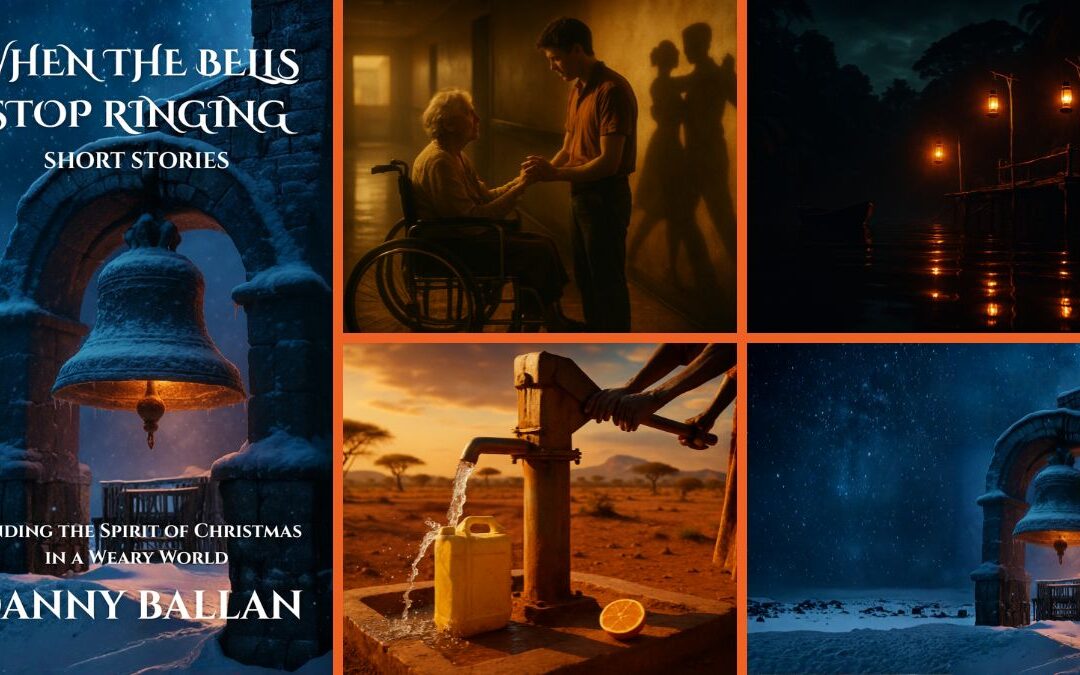- Audio Article
- Can War Ever Bring Peace? Lessons From History’s False Promises
- The Oldest Sales Pitch in Statecraft
- A King’s Conversion and the Limits of Conscience
- The Thirty Years’ War and the Birth of a Rulebook
- The Concert That Played in a Minor Key
- Versailles: Peace That Primed the Next War
- After World War II: A Different Peace
- The Cold War and the Paradox of Deterrence
- Humanitarian War: The Most Hopeful and Most Fragile Claim
- Regime Change and the Mirage of Quick Democracy
- What War Can Do—and Can’t
- The Anatomy of Durable Peace
- Nonviolent Movements and the Quiet Power of Dignity
- The Politics of “Price” and the Temptation of Simplicity
- The Verdict from History’s Witness Stand
- MagTalk Discussion
- Focus on Language
- Vocabulary Quiz
- The Debate
- Let’s Discuss
- Learn with AI
- Let’s Play & Learn
Audio Article
Can War Ever Bring Peace? Lessons From History’s False Promises
War has a talent for rebranding itself. It dresses up in solemn words and immaculate uniforms, and it borrows the language of virtue: sacrifice, duty, honor, freedom, peace. The pitch is familiar: fight now so we don’t have to fight later. Make war the price of peace. But does that claim hold up when we pull the historical record into the light? The story is complicated, and yes—more sobering than the slogans suggest. If peace is the destination, history shows that war is a treacherous guide who often promises a direct route, then abandons its travelers in a maze of consequences.
The Oldest Sales Pitch in Statecraft
From ancient empires to modern nation-states, leaders have framed conquest as a path to order. The Roman Empire called it the Pax Romana—peace through strength. Roads were built, trade flowed, and law spread; the price was expansion by force, the silencing of dissent, and periodic rebellions that required fresh campaigns to “restore tranquility.” It was “peace,” but it depended on legions marching and provinces complying. The peace looked sturdy from Rome’s marble steps; it felt brittle on the frontier.
The same pattern appears in other imperial narratives. Empires argue that war clears the brush for civilization. Yet the stability they nurture is often contingent on continued coercion. Pull away the garrison, and the “peace” frays. The lesson isn’t that stability never arrives; it’s that stability produced by arms is conditional, expensive, and frequently short-lived.
A King’s Conversion and the Limits of Conscience
There are, to be fair, striking exceptions and turning points. Consider the ancient Indian emperor who waged a devastating campaign, witnessed the suffering he caused, and then embraced ethical governance and nonviolence. His postwar reforms—moral edicts, welfare measures, religious tolerance—did create stretches of stability. But note the irony: the peace that followed did not come from continuing the war; it came from renouncing it. The transformation was moral, administrative, and cultural, not military.
The Thirty Years’ War and the Birth of a Rulebook
The Peace of Westphalia (1648) is often taught as the moment European powers decided to stop burning their continent down every few years. After three decades of carnage, rulers codified a new political arrangement: sovereignty, state borders, noninterference—ideas that still shape international relations. Did war “bring” this peace? Not exactly. War finally made the cost of not having a rulebook unbearable. The settlement was a reaction against war’s chaos, not a triumph born from it. Westphalia reduced certain kinds of religious conflict but hardly ended wars; it reorganized them under a secular grammar of power.
The Concert That Played in a Minor Key
After the Napoleonic Wars, European powers formed the Concert of Europe, holding congresses to cool tempers and manage disputes. For a time, it worked—at least for the great powers. But the bargain suppressed national aspirations and reform movements; stability relied on repressing demands simmering beneath the surface. When those demands finally boiled over, the continent learned, again, that peace achieved by bottling pressure is less a resolution than a delay.
Versailles: Peace That Primed the Next War
World War I ended with promises of “a war to end all wars.” Instead, the punitive terms imposed on the defeated, combined with humiliation, economic pain, and political upheaval, fertilized resentment. The peace settlement aimed to prevent another catastrophe but instead loaded the spring that snapped in 1939. This is one of history’s harshest verdicts on the “war for peace” claim: if war ends with arrangements that ignore dignity and viable futures, it paves the road not to peace but to revenge.
After World War II: A Different Peace
The post–World War II order in parts of the world did something unusual: it paired security arrangements with reconstruction and integration. In Western Europe, the Marshall Plan, economic interdependence, and eventually the European project transformed rivals into partners. It’s tempting to say war “brought” this peace, but that’s imprecise. Visionary policy and sustained investment brought it. The war merely made those choices politically irresistible. Elsewhere, however, the story diverged. Across Asia, Africa, and the Middle East, decolonization, partition, civil wars, and proxy conflicts meant the “long peace” of the nuclear standoff coexisted with frequent, costly regional wars.
The Cold War and the Paradox of Deterrence
Deterrence theory argues that overwhelming force can prevent war by making its price unpayable. Nuclear weapons, grotesque as they are, arguably dissuaded direct great-power war during the Cold War. But the paradox is brutal: to keep the peace at the center, states fought on the periphery—proxy wars that killed millions. “Peace through strength” can reduce one kind of disaster while redistributing violence elsewhere. If the measure is fewer world wars, the system succeeded. If the measure is human suffering, the ledger looks different.
Humanitarian War: The Most Hopeful and Most Fragile Claim
In the late 20th and early 21st centuries, “wars to protect civilians” entered the vocabulary: interventions to stop mass atrocities or ethnic cleansing. Sometimes airstrikes halted imminent massacres and created space for diplomacy; sometimes interventions produced short-term protection but long-term instability, especially when there was no careful plan for the political day after. High ideals can’t substitute for institutions, security, and the hard work of legitimacy. The record is mixed, not because protecting civilians is wrong, but because protection delivered by bombs without durable governance leaves vacuums. The peace that matters is the one people live, not the one declared from 30,000 feet.
Regime Change and the Mirage of Quick Democracy
The idea that invading a country will rapidly produce democracy is one of the most stubborn illusions in modern statecraft. Elections do not appear fully formed from the ashes of a toppled regime; they grow from the soil of civil trust, rule of law, and shared civic norms. Remove a dictator without building the boring, painstaking scaffolding of institutions, and you don’t get peace—you get a lottery where the winning numbers are often “factionalism,” “corruption,” and “insurgency.” The rhetoric promises a straight line from war to freedom; reality draws a tangle.
What War Can Do—and Can’t
War can remove a tyrant, change a map, or stop an advancing army. It can force negotiations when every other avenue has failed. But war cannot, by itself, reconcile communities, establish legitimacy, or heal the moral injuries inflicted by violence. These are not military achievements; they are political, social, and psychological projects. Victory on the battlefield is a decision about force; peace is a decision about how, and with whom, we will share a future.
The Anatomy of Durable Peace
When peace has held, it is almost always because certain conditions were met after the guns went quiet: credible security arrangements; inclusive political settlements; economic recovery that reaches the street, not just the stock index; justice that is restorative enough to close the wound without tearing the society in half; and regional diplomacy that interrupts the supply lines of grievance. It helps to have leaders who can sell the public on patience—because sustainable peace is constructed in years, not days. It also helps to have a narrative that honors loss without worshiping vengeance.
Nonviolent Movements and the Quiet Power of Dignity
History is rich with cases where nonviolent campaigns—organized, disciplined, and costly in their own way—produced more durable outcomes than armed struggle. They built legitimacy as they built momentum. They forced rulers to negotiate not because they were outgunned, but because they were outnumbered and outmaneuvered morally. The peace that follows is imperfect, like all human arrangements, but it starts with the habits that war suppresses: trust-building, compromise, and the normalization of dissent.
The Politics of “Price” and the Temptation of Simplicity
So why does the “price of peace” line endure? Because it’s simple, and simple feels strong. It collapses a puzzle into a purchase: pay up, get peace. But peace is not a commodity; it’s a relationship among citizens, neighbors, and nations. It’s the expectation that tomorrow’s arguments will be loud but bloodless. If a policy claims to deliver that by force alone, ask to see the fine print. Where are the courts? Where are the schools? Where is the local ownership of the settlement? Where is dignity protected for the side that lost? If the answers are thin, the peace will be too.
The Verdict from History’s Witness Stand
Does war ever bring peace? It can end an emergency. It can deter an aggressor. It can pry open a door that was sealed shut. But the thing we mean by peace—safety, justice, and the routine miracle of ordinary life—doesn’t walk through that door just because it’s open. It has to be invited, hosted, and protected by institutions, by habits of restraint, and by a politics that makes space for tomorrow’s losers to remain in the room. War can, at best, buy time. What we do with that time decides everything.
MagTalk Discussion
Focus on Language
Vocabulary and Speaking
Let’s zoom in on language you can actually use when you’re not debating foreign policy on a talk show. Start with “hold up,” as in, does a claim “hold up” under scrutiny? This little phrasal verb is a workhorse in everyday conversation. You can ask, “Does that excuse hold up?” or “Will your plan hold up if the budget is cut?” It means withstands testing or pressure, and it’s perfect whenever you want to sound both curious and careful rather than cynical. It invites evidence without slamming the door.
Next, “sobering.” It describes something that makes you more serious, often because the truth bites a bit. “The numbers were sobering,” you might say after looking at a monthly expense report or the unread messages piling up. It’s softer than grim, but sharper than merely serious. Use it when you want to dial down the optimism without turning off the light.
“On paper” is a phrase that admits the difference between theory and practice. “On paper this schedule is flawless,” you might confess, “but my toddler doesn’t read Outlook.” It’s a graceful way to acknowledge complexity without abandoning the idea. Keep it nearby for plans, proposals, and any diet that survives only in the spreadsheet.
“At a cost” helps you resist magical thinking. “Yes, I can finish that by Thursday—at a cost,” which could be sleep, quality, or your weekend. Use it to remind yourself and others that trade-offs are everywhere. It’s the linguistic seatbelt that keeps enthusiasm from flying through the windshield.
“Zero-sum” labels situations where one person’s gain is someone else’s loss. We toss it around in politics, but it’s just as helpful in family logistics (“whose turn is it to clean the kitchen?”) or office budgets (“if we add this feature, something else slips”). Saying “this isn’t zero-sum” is a gentle nudge toward creative options.
“Paper over” is another handy piece of everyday realism. To paper over a problem is to cover it with something thin and temporary—like taping a poster over a hole in the wall before guests arrive. “We can paper over the delay with a shiny announcement,” someone might suggest; you can reply, “or we can fix the underlying issue.” It’s a great phrase for naming shortcuts without being accusatory.
“Boil down to” trims complexity into a core issue. “Our argument boils down to timing,” or “the project boils down to three deliverables.” It’s not a dismissal of details; it’s a searchlight that points to the decision that actually matters. Use it when conversations sprawl and everyone forgets what started the meeting.
“Red line” sounds dramatic, but we use it all the time to set boundaries. “A meeting during dinner is a red line for me.” It doesn’t threaten; it clarifies. Boundaries are not weapons; they are maps. Say yours aloud and you’ll save yourself from quiet resentment later.
“Walk back” is an elegant way to correct yourself without self-immolation. “I want to walk back what I said yesterday—I was more definitive than the evidence allowed.” In a world allergic to apologies, “walk back” is disarming. It says, “I’m still thinking,” which is exactly what thinking people do.
Finally, “grapple with.” It’s honest about effort: you’re wrestling a problem, not pretending it’s already solved. “I’m grappling with how to balance ambition and rest.” Try saying this to yourself and others; it invites help and models humility.
Now let’s fold these into your speaking. Imagine you’re giving a two-minute update at work. You can start with a soft landing: “On paper, our rollout looked tight, but last week gave us a sobering look at our testing gaps.” You’ve set a serious tone without drama. Then chart the trade-offs: “We can hit the original date at a cost—quality—and that’s a red line for me.” This isn’t stubbornness; it’s clarity. Next, spotlight the crux: “The issue boils down to two tasks we papered over: integration and documentation.” Notice how these phrases make your update concise without stripping nuance. If you made a claim last week that’s now shaky, repair it gracefully: “I want to walk back my estimate; the new data doesn’t hold up.” You’re not losing face—you’re building credibility. End with partnership: “We’re grappling with prioritization, but this isn’t zero-sum. If we stagger features, we can protect quality and momentum.” That’s a lot of realism in a small space, and it lands because the language is precise, humane, and calm.
Your speaking challenge
Record yourself explaining a complicated personal decision—changing jobs, moving cities, even choosing a new hobby—in ninety seconds. Use at least six of the phrases above. Aim for a clear structure: start with “on paper,” admit the “sobering” fact, state your “red line,” name what the decision “boils down to,” describe what you refuse to “paper over,” and if needed, “walk back” a previous belief. Listen to the recording for filler words, but also for tone. Do you sound thoughtful rather than tentative? Are your boundaries audible without sounding rigid? Repeat the exercise until your language feels like a well-tailored jacket: fitted but comfortable. As a stretch goal, deliver the same message to two different audiences—friends and colleagues—and adjust your pacing and details without changing the core phrases. That’s real-world fluency: the same idea, tuned to the room.
Grammar and Writing
Here’s a writing challenge anchored to the theme: write a persuasive op-ed titled “The Price of Peace: What History Makes Us Pay,” 800–1,000 words. Your task is to argue that war rarely produces the peace its advocates promise, and to propose two non-military investments that do. Your audience is smart but busy. They want clarity, not fireworks.
Structure first. Open with a scene or statistic, then pivot to your thesis in one controlled sentence. A strong thesis here uses a concessive structure: “Although war can end immediate threats, it seldom builds the institutions that make peace durable; sustained investments in inclusive governance and economic interdependence do.” The concessive clause (“Although…”) gives your argument credibility by acknowledging the partial truth your opponents hold. It’s an intellectual handshake that earns you the right to disagree.
Now for signposting—subtle, not neon. Use transitional phrases to guide the reader: “At first glance,” “By contrast,” “More importantly,” “What follows,” “The upshot is.” These are non-invasive road markers; they keep your reader from getting lost without shouting at them.
Grammar moves that carry persuasive weight:
- Concessive subordination (“although,” “even though,” “while”). These clauses let you bake complexity into a single sentence: “While deterrence has prevented some conflicts, it has also displaced violence onto vulnerable regions.” Notice the balance: you neither ignore nor overindulge the counterargument.
- Hedging for accuracy (“largely,” “often,” “tends to,” “in many cases”). Hedging isn’t weakness; it’s precision. “Punitive settlements often sow future conflict” is stronger—and truer—than “always.”
- Parallelism. In lists or comparisons, echo your grammatical structure to make your logic memorable: “We need institutions that are inclusive in design, transparent in operation, and legitimate in the eyes of those who live under them.” Parallelism is rhythm plus reason.
- Appositives for compression. Appositives let you add clarifying detail without starting a new sentence: “Deterrence, a strategy that relies on credible threats, reduces some risks while creating others.” It keeps your prose tight and informative.
- Stance adverbs and modals. Words like “frankly,” “ironically,” or modals like “must,” “should,” “can” signal your voice and urgency. Use sparingly; too many and you sound like a lecture.
- Relative clauses for specificity. “A settlement that ignores dignity” is sharper than “a bad settlement.” Specificity is the enemy of vagueness and the best friend of persuasion.
- Cohesive devices: reference chains (“this peace,” “that claim,” “these costs”) tie sentences together. A well-placed “this” points the reader back to your idea so you can push it forward.
Pitfalls to avoid: sentence sprawl and emotional overreach. Keep average sentence length moderate and vary rhythm. Use one vivid metaphor and retire it; overwriting is sugar—too much and the argument gets sticky.
As you draft, practice the “claim–because–so” loop in paragraphs. Claim: “War can remove a tyrant but cannot install legitimacy.” Because: “Legitimacy grows from predictable law, fair processes, and participation.” So: “If we stop at victory, we guarantee relapse.” That loop makes your paragraphs self-propelled.
Edit in three passes. First for structure (does each section earn its place?), second for sentences (are concessives and parallels doing work?), third for words (swap abstractions for concrete nouns; trim adverbs that apologize for weak verbs). Read aloud. If your breath runs out, your sentence is guilty.
Finally, end with a forward-leaning paragraph that invites action, not fatalism. Propose investments—civic education, independent courts, regional trade, local peace committees. Peace is not a miracle; it’s maintenance. Say that plainly, and you sound like a grown-up.
Vocabulary Quiz
The Debate
Let’s Discuss
- When leaders say war is “the price of peace,” what kinds of costs are they leaving out? Consider human displacement, long-term trauma, economic diversion, and the risk of cycles of revenge.
- Can deterrence reduce some wars while worsening others? Explore the Cold War paradox, proxy conflicts, and how different regions experience “peace.”
- What does a peace settlement owe the losing side? Discuss dignity, reintegration, amnesty vs. accountability, and how humiliation breeds future instability.
- Which non-military investments most reliably prevent violence where you live? Think about independent courts, local conflict-resolution bodies, fair policing, civic education, and cross-border trade.
- How should we measure peace? Beyond “no shooting,” include justice, mobility, opportunity, and the daily predictability that lets ordinary life flourish.
Learn with AI
Disclaimer:
Because we believe in the importance of using AI and all other technological advances in our learning journey, we have decided to add a section called Learn with AI to add yet another perspective to our learning and see if we can learn a thing or two from AI. We mainly use Open AI, but sometimes we try other models as well. We asked AI to read what we said so far about this topic and tell us, as an expert, about other things or perspectives we might have missed and this is what we got in response.
Let’s widen the lens and talk about two areas often underplayed. First, the political economy of war and peace. War doesn’t just “happen”; it’s financed, supplied, and staffed. Those networks—contractors, smuggling routes, patronage webs—don’t vanish on ceasefire day. If the postwar economy isn’t deliberately restructured, the people who grew rich on instability will resist stability. That’s why anticorruption measures, customs reform, and community-level livelihoods are peace policies, not paperwork.
Second, trauma and time. Post-conflict societies aren’t blank slates; they are wounded communities. Unaddressed trauma warps politics: it narrows the imagination to protection and punishment, and it makes compromise feel like betrayal. Investing in mental health, truth-telling, and rituals of recognition isn’t sentimental—it’s strategic. People who feel seen are less easily mobilized by demagogues. Add to that the environmental layer: scorched land, poisoned water, and degraded infrastructure silently extend the war’s timeline. Creative reconstruction—think climate-resilient agriculture, decentralized energy, and green jobs—turns rebuilding into reconciliation with the future.
Finally, remember representation. Women, youth, minorities—those most affected by conflict—must be present when power is carved up. Their absence guarantees blind spots in security and justice. Durable peace is not the victory of one group; it’s the negotiated habit of living together, day after day, with rules we can argue inside of rather than outside.










0 Comments